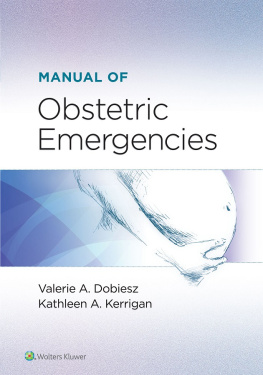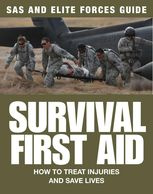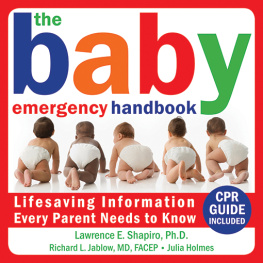Copyright 2020 Satori Continuum Publishing
All rights reserved. Except as permitted under the U.S. Copyright Act of 1976, no part of this publication can be reproduced, distributed, or transmitted in any form or by any means, or stored in a database or retrieval system, without the prior consent of the publisher.
Satori Continuum Publishing
1810 E Sahara Ave. Suite 1507
Las Vegas, NV 89104
Printed in the United States of America
Educational Service Disclaimer
This Provider Handbook is an educational service provided by Satori Continuum Publishing. Use of this service is governed by the terms and conditions provided below. Please read the statements below carefully before accessing or using the service. By accessing or using this service, you agree to be bound by all of the terms and conditions herein.
The material contained in this Provider Handbook does not contain standards that are intended to be applied rigidly and explicitly followed in all cases. A health care professionals judgment must remain central to the selection of diagnostic tests and therapy options of a specific patients medical condition. Ultimately, all liability associated with the utilization of any of the information presented here rests solely and completely with the health care provider utilizing the service.
Version 2020.01
TABLE of CONTENTS
1
FIRST AID
First aid refers to the emergency or immediate care you should provide when a person is injured or ill until full medical treatment is available. For minor conditions, first aid care may be enough. For serious problems, first aid care should be continued until more advanced care becomes available.
The decision to act appropriately with first aid can mean the difference between life and death. Begin by introducing yourself to the injured or ill person. Explain that you are a first aid provider and are willing to help. the person must give you permission to help them; do not touch them until they agree to be helped. If you encounter a confused person or someone who is critically injured or ill, you can assume that they would want you to help them. This is known as implied consent.
FIRST AID BASICS
The first step in any emergency is the recognition of the problem and providing help. When in doubt or when someone is seriously injured or ill, you should always activate the emergency response system by calling 911. If youre not sure how serious the situation is, the 911 operator will ask you a series of questions to determine the seriousness of it.
Remain on the line until additional help arrives, or until the 911 operator tells you to hang up. Emergency system dispatchers can guide you through the steps of performing cardiopulmonary resuscitation (CPR), using an automatic external defibrillator (AED), or delivering basic care until additional help arrives.
Whether you are at home, work, or school, know where the first aid kit and the AED are kept and be familiar with their contents. Know how to activate the emergency response system (by calling 911 if in the United States). Be aware of any policies in the workplace regarding medical emergencies.
After determining the problem, the next step in providing help is to determine the unresponsiveness of the injured or ill person. The best way to determine this is to tap the person and talk loudly to them: Are you okay? After determining unresponsiveness, yell for help. Look for any medical identifications, such as a necklace or a bracelet. This may provide a valuable clue to the cause of the situation.
SCENE SAFETY
Assessing the safety of the surroundings is critical when approaching any scene. You do not want to become another person who is injured or ill so look for any potential dangers. Remove the person from any dangers, such as presence of water at the scene. Be especially alert to avoid danger from automobile traffic.
HANDWASHING AND PERSONAL PROTECTIVE GEAR
Handwashing is essential in the prevention of disease and illness. Wash your hands after each episode of care and after taking off gloves. Also, be sure to wash the injured/ill persons hands at the first opportunity. When a sink is not available, use hand sanitizers. (Most hand sanitizers are alcohol-based and are a substitute for handwashing when needed.)
Proper handwashing technique is fairly simple:
- Completely wet your hands and generously apply soap.
- Rub vigorously for at least 20 seconds (Figure 1).
- Rinse your hands with plenty of running water.
- Dry your hands with a towel or air dryer.
Figure 1
Using personal protective gear is an important strategy to minimize the risk of blood and bodily fluid exposure. If the person is bleeding, always wear gloves and protective eyewear when giving first aid care. The universal precaution is to use personal protective equipment whenever there is possible exposure to blood or bodily fluids; it reduces the risk for both the rescuer and the injured/ill person to be exposed to a blood-borne disease. Gloves protect your hands from exposure to blood and other bodily fluids while eye protection prevents accidental exposure from splashing fluids.
Consider a pocket mask as part of your personal protective gear as it provides safety during rescue breathing. Be sure to dispose of all equipment that has touched bodily fluids in a biohazard bag when available.
Figure 2
When taking off the gloves, avoid touching the outer contaminated surface. Slowly pull one glove off while turning it inside out (Figure 2a) . Place the glove in the palm of the other gloved hand (Figure 2b) , and then remove the second glove while turning it inside out (Figure 2c) .
FIRST AID KIT
Consider purchasing a commercially available first aid kit or making your own. Having one available around the house, in your car, and at your place of work is essential.
Common items found in a first aid kit are:
- Bandages, roller bandages, and tape
- (Sterile) Gauze
- Antiseptic wipes and swabs
- Absorbent compresses
- Antibiotic cream
- Burn ointment
- Mask for breathing (rescue breathing/CPR)
- Chemical cold pack
- Eye shield and eyewash
- First aid reference guide that includes local phone numbers
Figure 3
SELF-ASSESSMENT FOR FIRST AID
- What is the first question you must ask before you respond to any first aid situation?
- Age of the injured or ill person
- Safety of the scene
- Nature of the injury
- Time of the injury
- Which of the following are considered personal protective equipment?
- Gloves
- Mask
- Eye shield
- All of the above
- What is the recommended amount of time to wash your hands?
- 10 seconds
- 20 seconds
- 1 minute
- 4 minutes
ANSWERS
- B
Ensuring the safety of the scene is critical. Avoid making yourself another injured/ill person.









